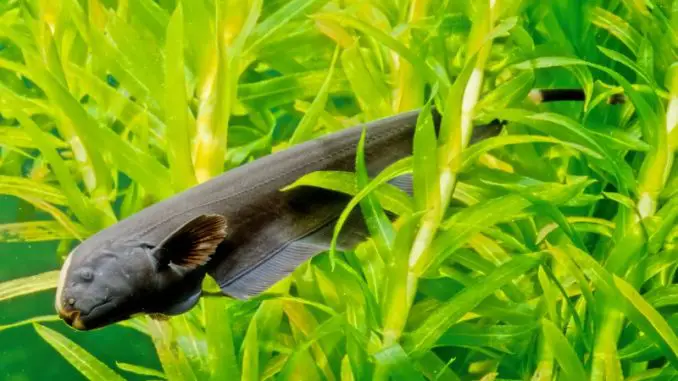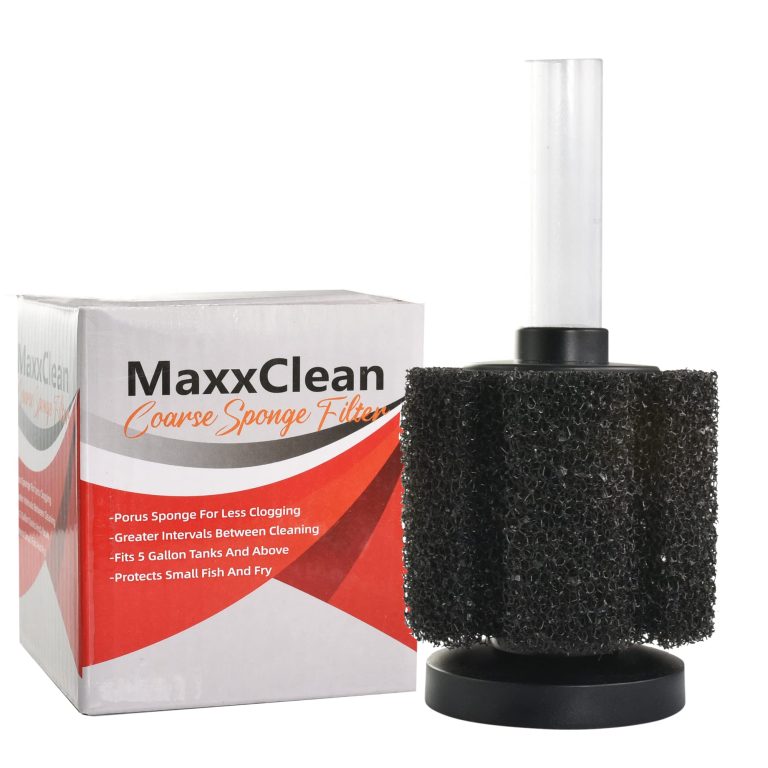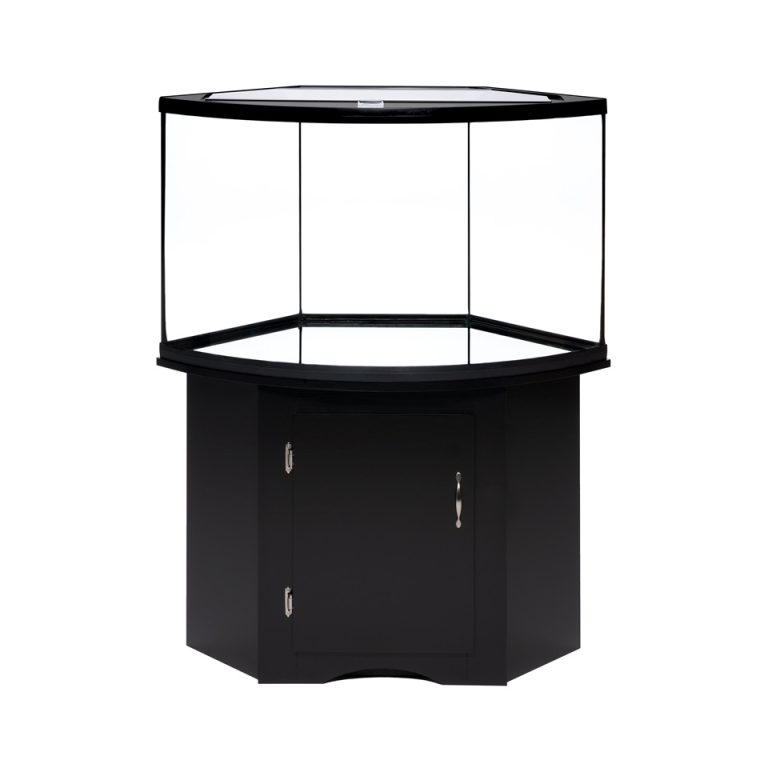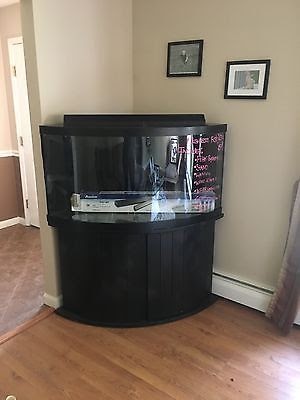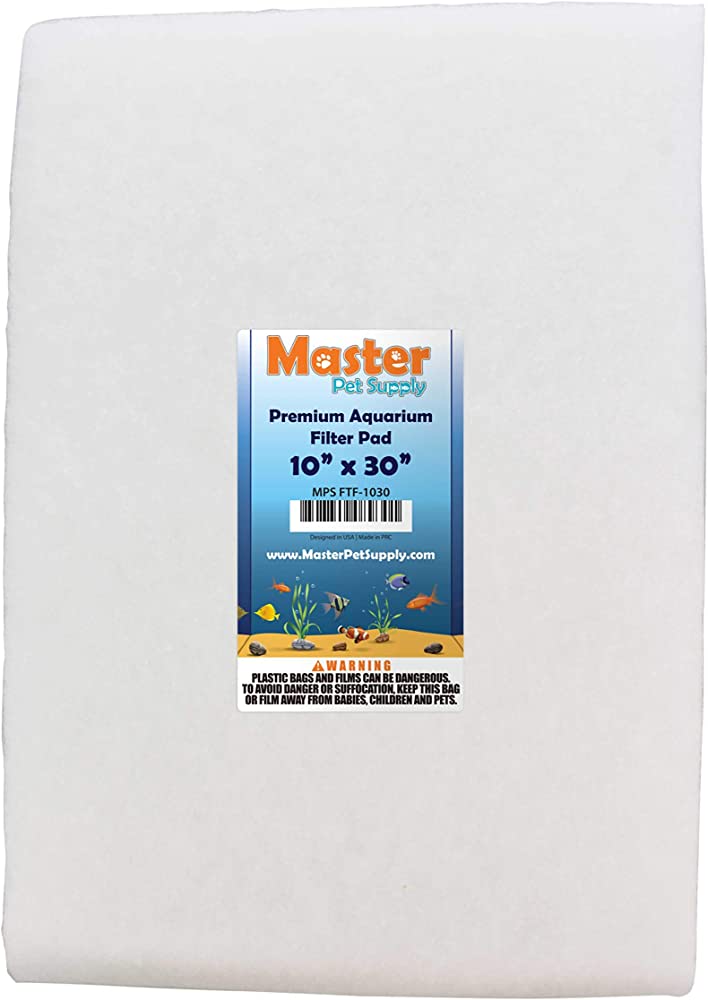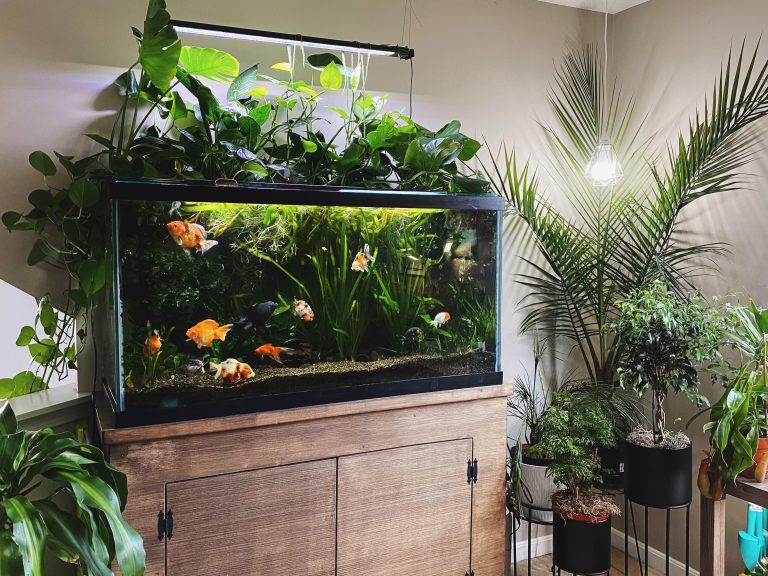Unlocking the Mystery: Causes of Green Algae on Aquarium Glass.
Green algae on aquarium glass is caused by an excess of light and nutrients in the water. Green algae growth on aquarium glass is a common problem faced by aquarium owners.
This green substance not only affects the appearance of the aquarium but can also harm the fish and plants inside. It can be a result of excessive exposure to light, poor water quality, overfeeding, or a lack of proper maintenance.
Many aquarium enthusiasts struggle to keep the algae under control, as it can be difficult to remove once it takes hold. However, with proper cleaning techniques, water testing, and adjustments to the aquarium’s environment, it is possible to prevent and get rid of green algae on the aquarium glass. In this article, we will explore the causes of green algae on aquarium glass and discuss some effective ways to keep your aquarium clean and healthy.

Credit: www.amazon.com
Understanding The Basics Of Green Algae In Aquariums
Green algae is a common sight in aquariums, but it can be a nuisance for aquarium owners. Understanding the basics of green algae in aquariums is crucial for keeping your aquarium clean and healthy. In this section, we will delve into the topic of green algae in aquariums, from its definition and types to why it is common in aquariums.
What Is Green Algae?
Green algae, also known as chlorophyta, is a type of algae that belongs to the plant kingdom. It is a single-celled organism that contains chloroplasts, enabling it to photosynthesize and produce its food. Green algae can be found in various environments such as freshwater, saltwater, and moist soil.
It is common in aquariums due to its ability to thrive in a suitable environment with nutrients and light.
The Types Of Green Algae
There are different types of green algae that can grow in an aquarium, such as:
- Filamentous algae: This type of algae appears as thin, hair-like strands that can cling to aquarium glass and other surfaces.
- Planktonic algae: This type of algae floats freely in the water and creates a cloudy, greenish tint to the water.
- Brush algae: This algae forms small, bushy plants that grow on surfaces such as rocks, plants, and aquarium glass.
Why Is Green Algae Common In Aquariums?
There are various reasons why green algae is common in aquariums, including:
- Presence of light: Green algae requires light to photosynthesize, and it can grow faster in aquariums that receive direct or indirect light.
- Nutrients: Nutrients such as nitrate and phosphate that come from fish waste, uneaten food, and decaying plant matter can contribute to green algae growth.
- Poor water circulation: Inadequate water flow can result in stagnant areas where nutrients can accumulate and provide a suitable environment for green algae to thrive.
- Imbalanced water chemistry: The presence of too much carbon dioxide or a high ph level can also lead to green algae growth.
Understanding the basics of green algae in aquariums is essential for keeping your aquarium healthy and clean. By identifying the types of green algae and the reasons for its growth, you can take measures to prevent and manage its occurrence in your aquarium.
The Causes Of Green Algae On Aquarium Glass
Green algae growth on your aquarium’s glass can be unpleasant to look at and can harm the inhabitants of your aquarium if not controlled. In this section, we’ll explore the key causes of green algae on aquarium glass in detail.
Inadequate Lighting
Insufficient lighting could be the primary reason for the formation of green algae on your aquarium’s glass. This is because green algae thrives in a low-light environment. Below are some key points to consider:
- Algae need light to grow, so it’s critical to provide adequate lighting in your aquarium for healthy plant growth and to prevent the formation of green algae.
- Determine the correct lighting level for your aquarium by considering factors such as the type and quantity of plants and fish.
- The incorrect duration of lighting exposure could also cause green algae to grow. It’s recommended to have a stable duration of lighting exposure.
High Nutrient Levels In The Aquarium
Overfeeding and excessive fish waste can lead to high nutrient levels in the aquarium, causing the growth of green algae on the glass. Here are some key points to remember:
- Overfeeding your fish can lead to excess uneaten food that decomposes, forming harmful chemical compounds that promote the growth of green algae.
- Too many fish can result in excessive waste, leading to the production of high nutrient levels in the water.
- Always ensure that you carry out regular water changes and remove any excess food or debris to keep nutrient levels at a minimum.
Poor Water Circulation
Another reason why your aquarium glass may be covered in green algae is poor water circulation within the aquarium. Insufficient water circulation leads to the accumulation of nutrients and waste in specific areas of the aquarium. Here are some key points to be mindful of:
- Install a filter in your aquarium to increase water flow and prevent the stagnation of water in one area, which can cause the accumulation of nutrients.
- Regularly clean and maintain your filtration system to ensure proper water circulation.
- The water pump must be correctly placed to ensure adequate flow of water throughout the whole aquarium.
Imbalanced Co2 Levels
The growth of green algae on aquarium glass may also be due to imbalanced co2 levels. Insufficient co2 results in a disruption of the aquarium’s ecosystem and enables algae to thrive on the glass. Here are some key points to keep in mind:
- Determine the appropriate level of co2 for your aquarium by consulting with a professional.
- Ensure that your aquarium’s co2 levels are balanced, and all equipment is functioning well.
- Installing a co2 diffuser in your aquarium can also help regulate co2 levels.
Overfeeding
Overfeeding is another major cause of green algae growth on aquarium glass. Throwing in large amounts of food at once leads to excess food waste that can attract unwanted algae. Here are some key points to keep in mind:
- Only feed your fish what they can consume in five minutes – never overfeed them.
- Ensure the food is appropriately sized for the fish species.
- Clean up any leftover food after feeding to prevent excess food waste from accumulating in the aquarium.
Inadequate lighting, high nutrient levels, poor water circulation, imbalanced co2 levels, and overfeeding are all common causes of green algae on aquarium glass. By understanding and minimizing these risk factors, you can reduce the chances of algae forming on your aquarium’s glass.
Identifying And Preventing Green Algae Growth
Green algae growth on the glass of an aquarium is an issue most aquarists have experienced. Not only does it ruin the appearance of the aquarium but it can harm the aquatic life inside. In this section of the blog post, we’ll discuss how to identify green algae growth, effective prevention measures, and cleaning dos and don’ts.
How To Identify Green Algae Growth
Identifying green algae growth is a vital step to solving the issue. Here are some methods to determine if there is green algae in your aquarium:
- Visual observation: Green algae appears as a greenish layer on the glass. It is easiest to detect in well-lit aquariums.
- Touch: Wipe your finger across the glass. If it has a slimy or slippery texture, there is a greater chance that it is green algae.
- Timeframe: If the layer on the glass appears within a few days of cleaning, it is most likely green algae.
Prevention Measures
Preventing green algae growth is essential. Here are some measures that are effective in avoiding green algae growth:
- Light exposure: Control the duration of light exposure. As green algae require light to photosynthesize, shorter light exposure duration can help prevent algae growth.
- Avoid overfeeding: Overfeeding contributes to a rise in nitrates and phosphates levels in the aquarium, causing algae growth. Feed your fish in moderation.
- Keep the aquarium clean: Ensure that the aquarium is clean at all times by cleaning regularly. Waste products such as fish droppings and dead plants, if left in the aquarium, contribute to the growth of green algae.
Cleaning Your Aquarium Glass: Dos And Don’Ts
Cleaning aquarium glass is essential for keeping the aquarium clean and free from green algae growth. Here are some dos and don’ts to keep in mind when cleaning the aquarium glass:
Do:
- Use a magnetic scrubber or algae scraper to clean the aquarium glass.
- Use an aquarium-safe glass cleaner to wipe the glass after cleaning.
- Change 10%-15% of the water at least once a week.
Don’t:
- Use household cleaners or chemicals that could harm aquatic life.
- Use abrasive pads, sharp objects, or wire brushes on the glass.
- Clean the aquarium glass too often. This could lead to the removal of beneficial bacteria, making it easier for algae to grow.
Green algae growth on aquarium glass can be difficult to deal with if not addressed early enough. By following these identification, prevention, and cleaning measures, you can keep your aquarium glass clean and prevent green algae from taking over.
Long-Term Management Of Green Algae In Aquariums
Green algae on aquarium glass is a common issue that all aquarium owners face, which can be quite frustrating. While the aquarium’s filter and lighting can play their part in the problem, there are ways you can control green algae growth in the long term.
In this section, we will discuss different methods of management of green algae in aquariums, including the use of algae-eating fish and invertebrates, chemical control, natural remedies, and consistency in maintenance.
Algae-Eating Fish And Invertebrates
Many species of fish and invertebrates love to feed on algae and can be a valuable addition to your aquarium ecosystem. Here are some examples:
- Plecos: A widely-known species of fish, which is effective in controlling algae growth on aquarium glass walls and decorations. They have a big appetite for algae and need a protected space to live in the aquarium.
- Siamese algae eaters: A small fish species, which is good at controlling different types of algae, including green algae. They eat newly formed algae with their sucker-like mouths.
- Snails: A snail can help to some extent to control the algae. They eat other debris and algae in the aquarium and, just like plecos, require a secured space to live.
- Shrimps: Amano shrimp, cherry shrimp, and ghost shrimp are some of the species that love to feast on algae. They can clean every nook and cranny of your aquarium.
Chemical Control
Chemical treatment is another method to get rid of green algae. However, it’s essential to select the right product, use the correct dosage and follow the instructions of the manufacturer.
- Algaecides: Chemicals like algaefix can be effective in treating green water and other types of green algae. However, it’s essential to follow the instructions carefully and not overuse these products.
- Hydrogen peroxide: Hydrogen peroxide is a natural bleaching agent and can be used to treat algae. It works by releasing oxygen when it breaks down – as a result, it can be helpful to oxygenate the aquarium water. However, it’s crucial not to use too much, which can harm fish and other aquatic creatures in the aquarium.
Natural Remedies
There are several natural ways to control the green algae in the aquarium. These methods are not only effective but also environmentally friendly.
- Reduce lighting: Limit the duration of light on aquarium during the day.
- Control nutrients: Decrease the amount of direct sunlight the aquarium receives, limit the nutrients in the water, reduce feeding quantity, etc.
- Water changes: Regular water changes can remove excessive nutrients that cause algae growth in the aquarium
Consistency In Maintenance
The most important factor to control algae in the aquarium is regular and consistent maintenance. Some measures to take include:
- Regular water changes: Regular water changes are crucial in getting rid of excess nutrients in the aquarium, which is the primary food source for algae.
- Filter cleaning: Consistently clean your filter to remove any trapped wastes.
- Maintain correct ph levels: Some species of algae grow where the ph level of water is elevated. Proper testing and maintaining the right ph level can help to control algae growth.
Controlling green algae in the long term requires patience and a consistent maintenance routine. Incorporating algae-eating fish, natural remedies, and proper chemical control can significantly reduce green algae growth. With the provided information, you can ensure that your aquarium stays lush and healthy for your aquatic pets while eliminating green algae on your aquarium’s glass.
Frequently Asked Questions For What Causes Green Algae On Aquarium Glass
Why Does Green Algae Form On Aquarium Glass?
Green algae form on aquarium glass due to the accumulation of excess nutrients like nitrate and phosphate, high light intensity, and lack of proper water circulation.
Is Green Algae Harmful To Fish In The Aquarium?
Green algae are generally not harmful to fish, but in excess amounts, they can lower the oxygen levels and make it difficult for fish and other aquatic organisms to survive.
How Can I Prevent Green Algae Growth In My Aquarium?
You can prevent green algae growth by reducing the amount of light your aquarium receives, reducing feeding amounts to minimize excess nutrients, and regularly cleaning the aquarium glass and water.
Can I Manually Remove Green Algae From My Aquarium Glass?
Yes, green algae can be manually removed by using a scraper or sponge to gently scrub the glass. Be careful not to scratch the glass or disturb the aquarium’s ecosystem too much.
Can Algae-Eating Fish Help Control Green Algae Growth?
Yes, there are many species of fish that eat algae, such as siamese algae eaters, plecos, and mollies. However, it’s important to research and choose compatible species for your aquarium.
Conclusion
Green algae growth on aquarium glass is an inevitable occurrence that every fish owner must expect. However, it is not something that cannot be taken care of. In most cases, an overabundance of light is the primary cause of green algae growth.
An aquarium that is clean and well-maintained will give less room for algae to grow. It is essential to put in place a regular routine that caters to ensuring that your aquarium remains clean and healthy. This includes regular water changes, cleaning filters, and investing in algae-eating species like snails and shrimp.
If you do experience an excessive algae growth, you should immediately take control measures to prevent is spreading and causing harm to your aquatic pets. Being vigilant and taking proactive steps in caring for your aquarium will lead to a healthier and enjoyable fish-keeping experience.
